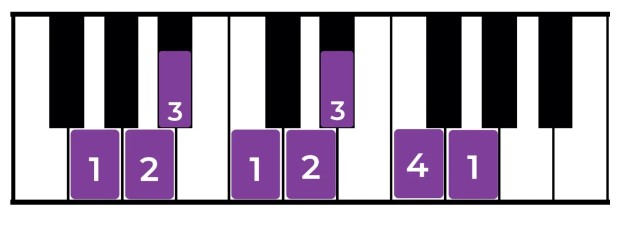The G Minor scale consists of seven notes, namely G, A, Bb, C, D, Eb, F and G. It is typically notated as commencing and concluding on G, and it can be repeated at higher or lower octaves. It belongs to a key, which is G Minor in this case, and is classified as a diatonic scale. There are three variations of the minor scale: the natural minor, harmonic minor, and melodic minor. For this post, we will focus on the G Natural Minor Scale, but you can explore the G Harmonic Minor and G Melodic Minor in our other articles.
Contents
HOW TO CREATE THE G NATURAL MINOR SCALE
Every Natural Minor scale adheres to a specific sequence of tones and semitones (whole steps and half steps).
The sequence is as follows: Tone, Semitone, Tone, Tone, Semitone, Tone, Tone.
If you begin with the note C and follow a specific pattern of whole and half steps, you will end up with the C Natural Minor Scale. Similarly, to create the G Natural Minor Scale, you would start on the note G and follow the same pattern.
Regardless of which note you begin with, you will always end up with a minor scale starting on that note.

G NATURAL MINOR SCALE ON THE PIANO
As you can see, if we were to play this scale on the piano diagram we use two black keys for the Bb and Eb.

To play this scale on the piano use the fingers written below.

G NATURAL MINOR SCALE ON THE GUITAR
You can use the tab below to play the G Natural Minor scale on the guitar

DEGREES OF THE SCALE: G MINOR
The G Minor scale is made up of different notes, each of which has a specific position known as a degree. The very first note in the scale is called the “tonic” note.

KEY SIGNATURE FOR G MINOR
nstead of writing flat symbols on each individual note, we can use the key signature to represent them. G Minor is known as the relative minor of B flat Major, which can be determined because G is the sixth note in the Bb Major scale. As a result, both scales share the same key signature, which includes two flats: Bb and Eb.
The complete scale, including all notes, can be written using the key signature.

G MINOR SCALE IN DIFFERENT CLEFS
Treble Clef
Below is the G Natural Minor Scale written out in the treble clef, both ascending and descending.

Bass Clef
Below is the G Natural Minor Scale written out in the bass clef, both ascending and descending.

Alto Clef
Below is the G Natural Minor Scale written out in the alto clef, both ascending and descending.

Tenor Clef
Below is the G Natural Minor Scale written out in the tenor clef, both ascending and descending.

When we refer to a piece of music as being in the key of G Minor, it indicates several things:
- If a piece of music is in the key of G Minor, it will have a key signature that includes Bb and Eb, since the relative major of G Minor is Bb Major.
- The root note or tonic of the piece will be G natural, which will sound the most stable throughout the piece.
- The music will primarily use notes from the G Minor scale, which could be in any octave
- The chords utilized in a piece of music that is in the key of G Minor will consist of the chords found in the G Minor scale.
If you’re interested in learning more about music scales, chords, and musical theory, visit our Guitar tunio today
